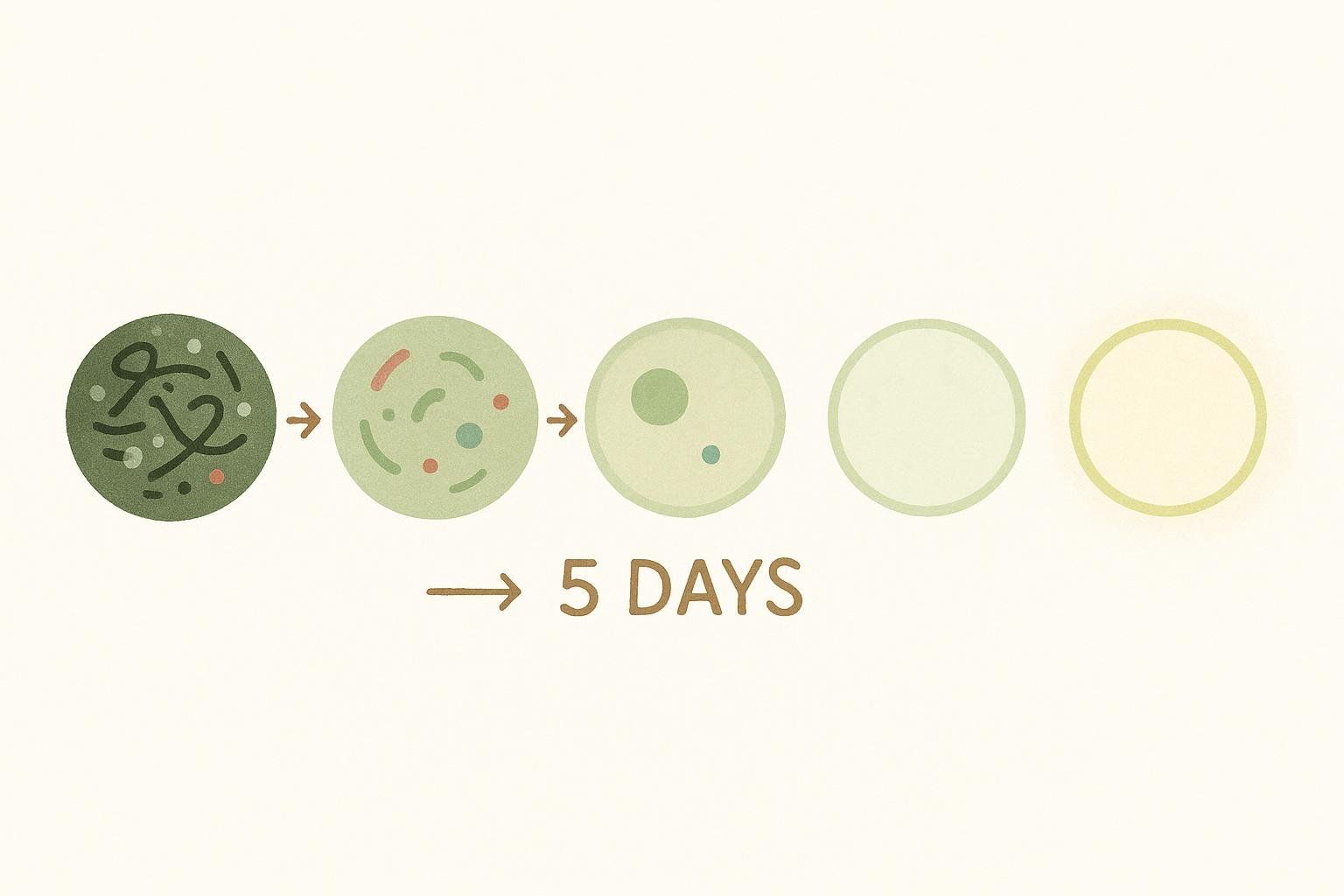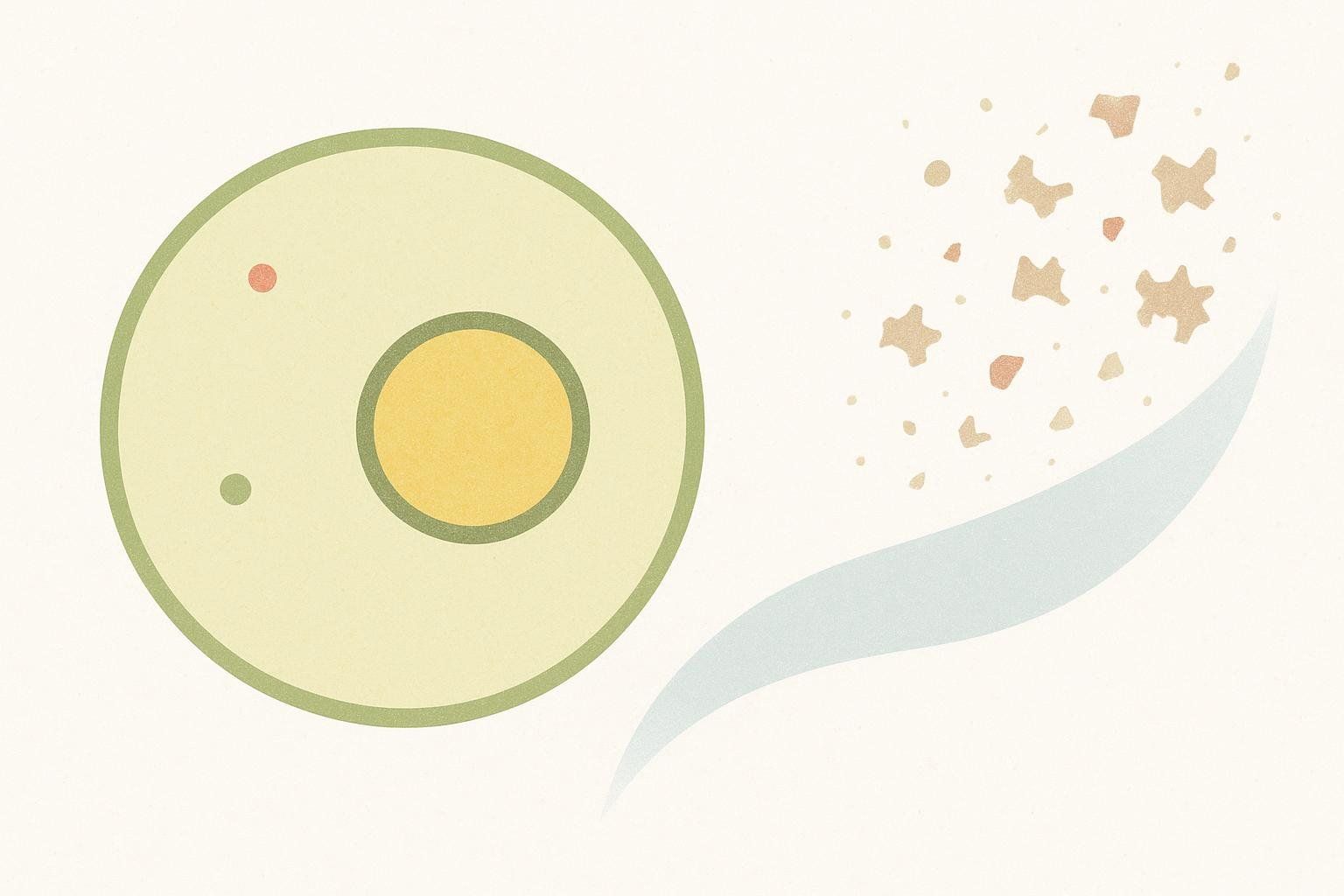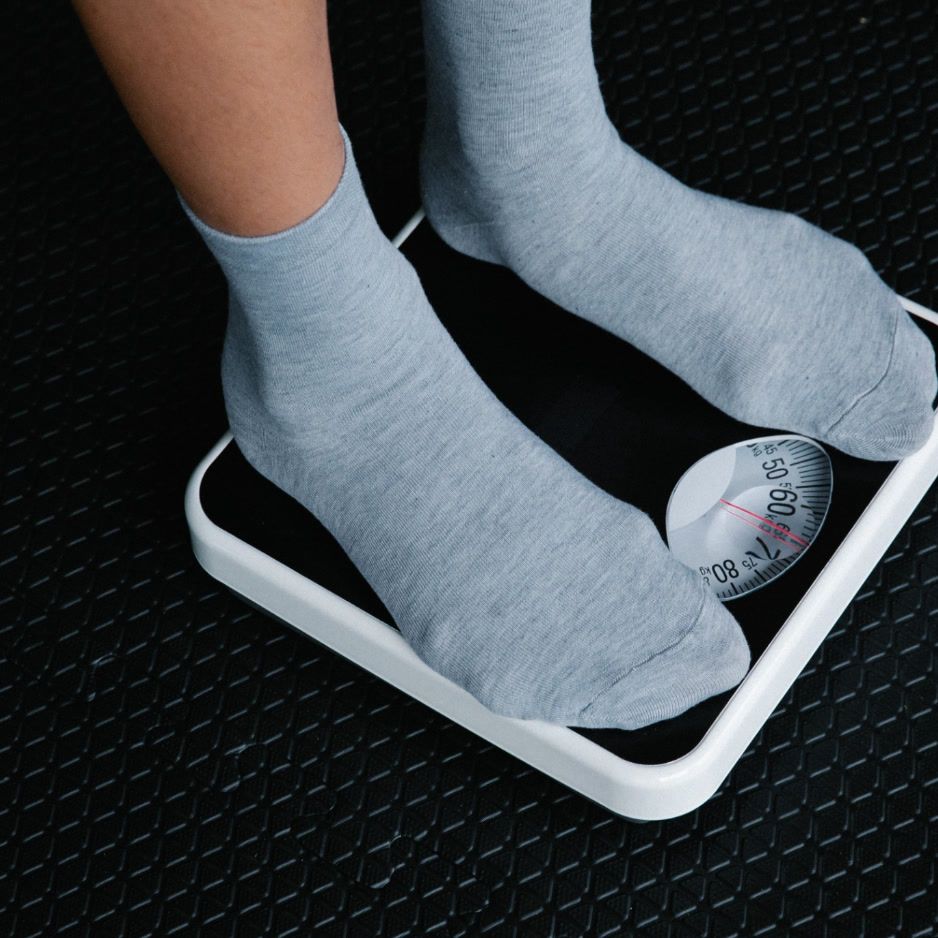The Longevity Diet: Science-Backed Eating for a Longer, Healthier Life

The Longevity Diet: A Science-Backed Guide to Eating for a Longer, Healthier Life
USC researcher Dr. Valter Longo has spent over three decades studying aging and nutrition. His groundbreaking work led to the development of the Longevity Diet—a scientifically-backed eating plan that combines pescatarian nutrition principles with periodic fasting cycles to promote cellular regeneration and potentially extend both lifespan and healthspan.
The diet is built on two key components: a daily nutrition plan that emphasizes pescatarian eating with specific protein, carbohydrate, and fat guidelines, and periodic fasting-mimicking diet (FMD) cycles that trigger cellular renewal and regeneration.
The Science Behind the Longevity Diet
Dr. Longo's research began with studying centenarians in regions known as Blue Zones—five specific geographic areas where people regularly live to 100 and beyond: Ikaria, Greece; Loma Linda, California; Nicoya Peninsula, Costa Rica; Okinawa, Japan; and Sardinia, Italy. He discovered that these populations shared common dietary patterns: they ate mostly plant-based foods, consumed moderate amounts of fish, limited protein intake, and often experienced periods of food scarcity.
Building on these observations, Dr. Longo's laboratory research revealed something remarkable: specific dietary patterns could activate stem cell regeneration, reduce inflammation, and protect against age-related diseases like diabetes, cancer, Alzheimer's, and heart disease. The key was mimicking the effects of prolonged fasting without the negative side effects of starvation.
The Core Principles: Five Pillars of Longevity
The Longevity Diet is built on five fundamental pillars that work together to promote healthy aging:
Pillar 1: Pescatarian Foundation
The diet is primarily plant-based with the addition of fish and seafood 2-3 times per week. This provides essential omega-3 fatty acids and vitamin B12 while keeping saturated fat and inflammatory compounds low.
Recommended fish choices include:
- Salmon (wild-caught when possible)
- Sardines
- Anchovies
- Cod
- Sea bream
- Trout
- Shellfish like clams and shrimp
The emphasis is on smaller fish that are high in omega-3s but lower in mercury contamination.

Pillar 2: Protein Moderation by Age
Unlike many modern diets that emphasize high protein intake, the Longevity Diet recommends moderate protein consumption that varies by age:
Under 65 years old:
- 0.31-0.36 grams of protein per pound of body weight
- Example: A 130-pound person needs 40-47 grams daily; a 220-pound person needs 68-79 grams daily
Over 65 years old:
To maintain muscle mass and prevent frailty, adults over 65 need 0.45-0.54 grams of protein per pound of body weight. For a 130-pound person, this equals 59-70 grams daily, while a 220-pound person needs 99-119 grams daily. To meet this higher protein requirement, Dr. Longo recommends that older adults include more fish in their diet and, for those who are comfortable with it, incorporate small amounts of eggs and occasionally dairy products from goats and sheep to ensure adequate protein and B12 intake.
The protein should come primarily from plant sources like beans, chickpeas, green peas, nuts, and seeds.
Pillar 3: Healthy Fats and Complex Carbohydrates
The diet emphasizes getting about 30% of calories from plant-based fats, particularly from:
- Extra virgin olive oil (about 3 tablespoons daily)
- Nuts and seeds (about 1 ounce daily)
- Avocados

Complex carbohydrates should come from unrefined sources like:
- Whole grains (quinoa, brown rice, oats, farro)
- Legumes and beans
- Vegetables (especially tomatoes, broccoli, carrots)
Pillar 4: Time-Restricted Eating
All food consumption should occur within a 12-hour window, typically from 8 AM to 8 PM. This creates a daily fasting period that allows the body to shift into repair and regeneration mode.
Meal frequency depends on your individual needs:
- Two to three meals plus one optional low-sugar snack under 100 calories
- Adjust based on your calorie targets and hunger cues
Important: Stop eating 3-4 hours before bedtime to optimize sleep and metabolic processes.
Pillar 5: Periodic Fasting-Mimicking Cycles
The most unique aspect of the Longevity Diet is the inclusion of 5-day fasting-mimicking diet (FMD) cycles, performed 2-4 times per year. These cycles provide the benefits of prolonged fasting while still allowing some food intake. The FMD can be done using pre-packaged meal kits (like ProLon, which was developed based on Dr. Longo's research) or by following specific caloric and nutrient guidelines, though consulting with a healthcare provider is strongly recommended before starting any FMD cycle.
Understanding the Fasting-Mimicking Diet (FMD)

Recent research published in Nature Communications in 2024 revealed that just three monthly cycles of the FMD reduced participants' biological age by an average of 2.5 years. This isn't just theoretical—it's a measurable change in biomarkers associated with aging, disease risk, and mortality. The diet's combination of daily nutrition and strategic fasting also significantly decreases dangerous visceral fat.
What Happens During FMD Cycles?
The 5-day FMD is designed to mimic the effects of water-only fasting while providing essential nutrients:
Day 1: Approximately 1,100 calories
Days 2-5: Approximately 800 calories
During these cycles, the body experiences:

- Autophagy activation: Cells clean out damaged components and regenerate
- Stem cell activation: Dormant stem cells become active, promoting tissue renewal
- Metabolic reset: Improved insulin sensitivity and fat metabolism
- Immune system rejuvenation: Increased lymphoid-to-myeloid ratio, indicating a more youthful immune profile
FMD Research Results
The 2024 study tracked multiple biomarkers and found impressive results:
- Reduced insulin resistance and lower HbA1c levels
- Significant decrease in abdominal and liver fat, with participants who started with fatty liver showing hepatic fat reduced by nearly 50%
- Improved immune function with a more youthful immune cell profile
- Lower biological age as measured by validated aging clocks
Participants showed consistent improvements across these health markers regardless of their starting health status, suggesting the FMD works as both prevention and intervention.
Foods to Eat: Your Longevity Pantry
Protein Sources
- Legumes: Black beans, chickpeas, lentils, green peas
- Nuts and seeds: Almonds, walnuts, pistachios, pumpkin seeds
- Fish: Salmon, sardines, anchovies, cod (2-3 times weekly)
- Plant proteins: Tofu in moderation (for those comfortable with soy)
Healthy Fats
- Extra virgin olive oil (primary cooking fat)
- Nuts: Almonds, walnuts, pistachios
- Avocados
- Seeds: Flax, chia, hemp hearts
Complex Carbohydrates
- Whole grains: Quinoa, brown rice, oats, farro, spelt
- Vegetables: Tomatoes, broccoli, leafy greens, carrots, bell peppers
- Fruits: Berries, apples, citrus fruits (in moderation)
Beverages
- Water (primary hydration)
- Green tea
- Herbal teas
- Coffee (in moderation, no added sugar)
Supplements and Extras
- Multivitamin (Dr. Longo suggests that a multivitamin taken every few days can help ensure nutrient adequacy)
- Dark chocolate (small amounts, 70%+ cacao)
- Herbs and spices (turmeric, ginger, herbs)
Foods to Limit or Avoid
Foods to Exclude
- Red meat (beef, pork, lamb)
- Processed meats (bacon, sausage, deli meats)
- Refined sugars and high-sugar foods
- Processed foods with artificial additives
- Trans fats and excessive saturated fats
Limit Significantly
- White meat (chicken, turkey)
- Dairy products (small amounts of goat or sheep cheese if desired)
- Refined grains (white bread, white rice, pastries)
- Alcohol (if consumed, limit to small amounts with meals)
Sample 7-Day Longevity Diet Menu
Below is a sample meal plan to help you visualize what a week on the Longevity Diet might look like. Pair each meal with water as your primary beverage, and enjoy green tea, herbal teas, or coffee throughout the day as desired. Feel free to adapt these suggestions based on your preferences, dietary restrictions, and caloric needs.
| Day | Breakfast | Lunch | Dinner |
|---|---|---|---|
| Monday | Steel-cut oats with blueberries, chopped walnuts, drizzle of olive oil | Quinoa salad with chickpeas, diced tomatoes, cucumber, fresh herbs | Grilled salmon with roasted mixed vegetables and lentils |
| Tuesday | Chia pudding made with almond milk and mixed berries with nuts | Mixed greens with white beans, avocado, olive oil vinaigrette, whole grain roll | Hearty lentil vegetable soup with sautéed spinach and brown rice |
| Wednesday | Avocado toast on whole grain bread topped with tomato and hemp seeds | Black bean and quinoa bowl with roasted vegetables and tahini dressing | Baked cod with Mediterranean vegetables and farro salad |
| Thursday | Green smoothie with spinach, berries, almond milk, side of mixed walnuts | Mediterranean chickpea salad with olives, cucumber, whole grain pita | Black bean and vegetable stir-fry over brown rice |
| Friday | Quinoa porridge with almond milk, cinnamon, almonds, fresh berries | Lentil vegetable curry with brown rice | Three-bean chili with quinoa |
| Saturday | Chia pudding with coconut milk, seasonal fruit, pistachios | Buddha bowl with roasted vegetables, quinoa, tahini, edamame | Vegetable white bean stew with sautéed kale |
| Sunday | Steel-cut oats with flax seeds, berries, mixed nuts, olive oil | Pressed tofu salad with mixed vegetables, olive oil dressing, whole grain crackers | Baked sardines with roasted Mediterranean vegetables and herbed farro |

Optional daily snack: A handful of almonds or walnuts, an apple with a small amount of nut butter, or a few squares of dark chocolate (70%+ cacao) if additional calories are needed.
How the Longevity Diet Affects Body Composition
One of the most remarkable aspects of the Longevity Diet is how it optimizes body composition—the ratio of fat to lean muscle mass. This is particularly important because body composition is a stronger predictor of health and longevity than weight alone.
Visceral Fat Reduction

The diet is particularly effective at targeting visceral fat—the dangerous fat that surrounds internal organs. Research shows that visceral fat acts like an endocrine organ, pumping out inflammatory compounds that accelerate aging and disease risk.
The Longevity Diet is believed to reduce visceral fat through several key mechanisms:
- Improved insulin sensitivity from protein moderation and timing
- Reduced inflammation from plant-based foods and omega-3 fatty acids
- Enhanced autophagy during FMD cycles that breaks down fat cells
Tracking tip: Booking a DEXA scan is the gold standard for measuring visceral fat and tracking your progress on the Longevity Diet.
Muscle Preservation
Unlike restrictive diets that often lead to muscle loss, the Longevity Diet's daily eating plan is designed to maintain lean muscle mass. The strategic protein timing and adequate daily nutrition help preserve the muscle tissue that's crucial for healthy aging, even while incorporating periodic fasting cycles.
After age 65, the diet recommends slightly higher protein intake to combat natural muscle loss and maintain functional independence.
Special Considerations by Life Stage
Young Adults (20s-30s)
- Focus: Building healthy habits and optimizing cellular function
- Protein target: 0.31-0.36g per pound of body weight
- FMD frequency: 2 times per year for healthy individuals
- Key benefit: Disease prevention and metabolic optimization
Middle Age (40s-50s)
- Focus: Preventing age-related disease onset
- Considerations: May benefit from more frequent FMD cycles (3-4 times yearly)
- Hormonal changes: The diet's anti-inflammatory foods and focus on blood sugar stability may help support the body during hormonal transitions like perimenopause
- Key benefit: Slowing cellular aging processes
Older Adults (60s+)
- Focus: Maintaining function and preventing frailty
- Protein adjustment: 0.45-0.54g per pound of body weight
- Safety first: More careful monitoring during FMD cycles
- Key benefit: Preserving independence and quality of life
Special Populations
The diet's principles may also offer benefits for specific groups, though modifications and medical supervision are essential:
People with diabetes: The FMD has shown particular promise for improving glucose control in research studies, but medical supervision is essential.
Athletes: May need modifications to meet higher energy and protein demands while maintaining the core principles.
Potential Benefits Beyond Longevity

The Longevity Diet's mechanisms of action suggest several additional health benefits beyond extending lifespan. By targeting the fundamental cellular processes that drive aging and disease, this approach may provide protective effects across multiple body systems.
Potential Impact on Cardiovascular Health
The diet's focus on anti-inflammatory foods, omega-3s, and time-restricted eating may support heart health by helping to improve blood pressure, cholesterol profiles, and endothelial function, while FMD cycles can help reset key metabolic pathways.
Potential for Improved Metabolic Health
- May improve insulin sensitivity through protein moderation and periodic fasting
- Could reduce type 2 diabetes risk through enhanced glucose control
- Better fat oxidation and glucose tolerance may occur during FMD periods
- Visceral and liver fat reduction may help restore metabolic balance
Potential Effects on Cognitive Function
- May enhance neuroplasticity through stem cell activation
- Could reduce neuroinflammation that protects against cognitive decline
- Better stress resilience may result from improved cellular cleanup mechanisms
- Mental clarity may improve from reduced oxidative stress
Potential for Reduced Cancer Risk
- May help lower IGF-1 levels (growth factor linked to cancer development)
- Enhanced DNA repair mechanisms may occur during FMD cycles
- Could improve immune surveillance against abnormal cells
- Reduced chronic inflammation may create protective effects
Common Challenges and Solutions
Challenge 1: "I'm Always Hungry on Lower Protein"
Solution: Focus on high-fiber foods that provide satiety. Include healthy fats with meals and ensure you're eating enough overall calories. Remember, the body adapts to protein levels over time.
Challenge 2: "The 12-Hour Window Is Too Restrictive"
Solution: Start gradually by extending your current fasting period. Choose a window that works with your lifestyle—it doesn't have to be 8 AM to 8 PM for everyone.
Challenge 3: "I'm Worried About the FMD Cycles"
Solution: Work with a healthcare provider, especially if you have any health conditions. Start with one cycle and see how your body responds. The FMD isn't mandatory—you can still benefit from the daily diet principles.
Challenge 4: "It's Too Expensive"
Solution: The diet can be adapted to fit any budget with a few key strategies:
- Build your shopping list around affordable staples like beans, lentils, oats, seasonal vegetables, and frozen fish
- Buy fish in season or frozen
- Shop for whole grains and legumes from bulk bins
- Plan meals in advance to reduce food waste
- Choose seasonal produce and store brands for staples
Challenge 5: "I'm Struggling with the Transition"
Solution: Start gradually with the diet's core principles. Begin by eliminating red meat and processed foods, then slowly incorporate time-restricted eating. Focus on mastering the daily nutrition guidelines before attempting FMD cycles. Many people find that working with healthcare providers helps monitor progress and address concerns along the way.
Safety Considerations and Contraindications
The Longevity Diet is generally safe for healthy adults, but certain groups should exercise caution or avoid it entirely:
Who Should Avoid the Full Program:
- Pregnant or breastfeeding women
- Children and adolescents
- People with eating disorder history
- Individuals taking medications that require consistent food intake
Who Needs Medical Supervision:
- People with diabetes (especially those on medication)
- Individuals with heart disease
- Those with kidney or liver disease
- Anyone taking prescription medications
- People with a history of gallstones
Signs to Stop and Consult a Doctor:
- Persistent fatigue or weakness
- Dizziness or fainting
- Severe hunger or food obsession
- Rapid weight loss (more than 2 pounds per week on average)
- Any concerning symptoms during FMD cycles
Measuring Your Success
The Longevity Diet's benefits extend far beyond what you see on a scale. Here are key metrics to track:
Biomarkers to Monitor:
- Fasting glucose and HbA1c (blood sugar control)
- Lipid panel (cholesterol and triglycerides)
- C-reactive protein (inflammation marker)
- Blood pressure
- Waist circumference
- Body composition (via DEXA scan)
Functional Measures:
- Energy levels throughout the day
- Sleep quality and duration
- Exercise performance and recovery
- Cognitive function and mental clarity
- Mood stability
Long-term Tracking:
Consider annual or bi-annual comprehensive health assessments including:
- Complete metabolic panel
- Inflammatory markers
- A DEXA scan to measure body composition changes
- Cardiovascular fitness testing
- Biological age testing (if available)
The Bottom Line: Is the Longevity Diet Right for You?
The Longevity Diet shifts the focus from the number on the scale to the quality of your years, moving beyond simple restriction to target the cellular mechanisms of long-term health. Unlike fad diets that promise quick fixes, this approach is designed to be a sustainable lifestyle that grows more beneficial over time.
The diet may be ideal for you if:
- You're focused on long-term health rather than quick weight loss
- You're willing to reduce animal protein consumption
- You can commit to the time-restricted eating pattern
- You're interested in occasional structured fasting periods
- You want an evidence-based approach to nutrition
You might want to consider alternatives if:
- You have a history of disordered eating
- You require very high protein intake for athletic performance
- You have medical conditions that require consistent food intake or stable blood glucose levels
- You prefer more flexible eating patterns
Getting Started: Your 4-Week Action Plan
This 4-week action plan provides a step-by-step guide to help you successfully adopt the Longevity Diet's core principles:
Week 1: Assessment and Foundation
- Consult with your healthcare provider about starting the diet
- Record your starting weight and waist circumference
- Consider scheduling a baseline DEXA scan to track body composition changes
- Begin eliminating red meat and processed foods from your diet
- Document your current eating patterns, energy levels, and sleep quality
Week 2: Optimize Timing and Add Fish
- Practice eating all meals within a 12-hour window (such as 8 AM to 8 PM)
- Stock your pantry with longevity-approved foods like beans, nuts, olive oil, and whole grains
- Add 2-3 fish meals per week, focusing on smaller species like sardines, anchovies, and wild salmon
- Pay attention to how you feel with the new timing and note any changes in hunger patterns or energy levels
Week 3: Adjust Protein Intake
- Calculate your specific protein needs using the guidelines above (0.31-0.36g per pound if under 65, or 0.45-0.54g if over 65)
- Use a food tracking app for one week to ensure you're meeting but not exceeding your protein targets
- Monitor how satisfied you feel with meals and adjust fiber and healthy fat content as needed
- Note any changes in your energy levels, satiety between meals, and workout recovery
Week 4: Plan for FMD and Long-term Integration
- Research FMD protocols and consider whether pre-packaged programs or DIY approaches work better for you
- Schedule a consultation with your healthcare provider about participating in FMD cycles
- Refine your daily routine based on what you've learned in the first three weeks
- Assess your overall progress and plan your first FMD cycle if appropriate for your health situation
Ongoing: Monitor and Adjust
Continue assessing your progress and making adjustments as your body adapts. Review biomarkers and functional improvements monthly, and consider scheduling a follow-up DEXA scan after 6-12 months or after completing 2-3 FMD cycles to assess meaningful body composition changes. Adjust portions and timing based on your body's responses and life changes.
Remember, the journey with the Longevity Diet isn't about perfection—it's about consistency and gradual improvement. Every meal is an opportunity to nourish your body in a way that supports not just how long you live, but how well you live.
Frequently Asked Questions
Q: How does the Longevity Diet compare to other popular diets like Mediterranean or ketogenic?
The Longevity Diet shares similarities with the Mediterranean diet in its emphasis on plant foods, fish, and olive oil, but it's more specific about protein amounts and includes the unique fasting-mimicking cycles. Unlike ketogenic diets, it includes healthy complex carbohydrates and doesn't aim for ketosis as a primary goal.
Q: Can I build muscle on the Longevity Diet?
Yes, but the approach differs from traditional high-protein muscle-building diets. The moderate protein intake, combined with resistance training, can support muscle maintenance and modest growth, especially when protein is timed around workouts. The diet prioritizes longevity over maximum muscle gain.
Q: How expensive is it to follow the Longevity Diet?
The cost can vary widely depending on your food choices. Plant proteins like beans and lentils are very affordable, while high-quality fish can be more expensive. Many followers find their grocery costs similar to or lower than their previous diet, especially when eliminating expensive processed foods and red meat.
Q: What if I can't give up meat entirely?
The diet allows for some flexibility. While the research is based on primarily pescatarian eating, you might start by dramatically reducing red meat and poultry consumption rather than eliminating them completely. Even partial adoption of the principles can provide benefits.
Q: How long before I see results?
Many people notice improved energy and better sleep within the first few weeks. Measurable biomarker improvements typically appear after 2-3 months of consistent adherence. The most dramatic changes often occur after incorporating FMD cycles, with some research showing biological age improvements after just three monthly cycles.
Q: Is the Longevity Diet safe for people with diabetes?
The research shows promising results for people with pre-diabetes and type 2 diabetes, but medical supervision is essential. The fasting-mimicking portions particularly require careful blood sugar monitoring and possible medication adjustments.


